Did you know that you can compare your ethnicity with that of your DNA matches on Ancestry? In this post, learn how to do this in order to learn more from your DNA results.
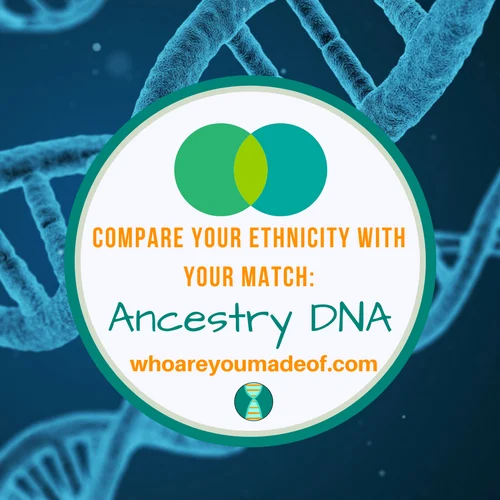
In this post, I will explain how to access the ethnicity comparison between you and any given DNA match and what this might mean for your family tree research. At the very least, it will be neat to easily compare yourself with close relatives to really see ethnicity inheritance in action.
To Access the Ethnicity Estimate Comparison Feature on Ancestry DNA
The first step to compare your ethnicity estimate with that of your DNA match is to access your DNA match list. You can access your DNA match list from your DNA Insights page, or directly from the menu on the mobile site (the DNA Matches tab).
From your DNA match list, you should then scroll down to the match that you are interested in. To the right of their name, you will see two little blue circles that look like a Venn Diagram (and the word "compare").
Click on this next to the name of the match that you would like to compare to yourself. In the image below, which is a list of my mother's DNA matches, you can see myself and my sister on her list, and the red rectangle is around the place where you should click:
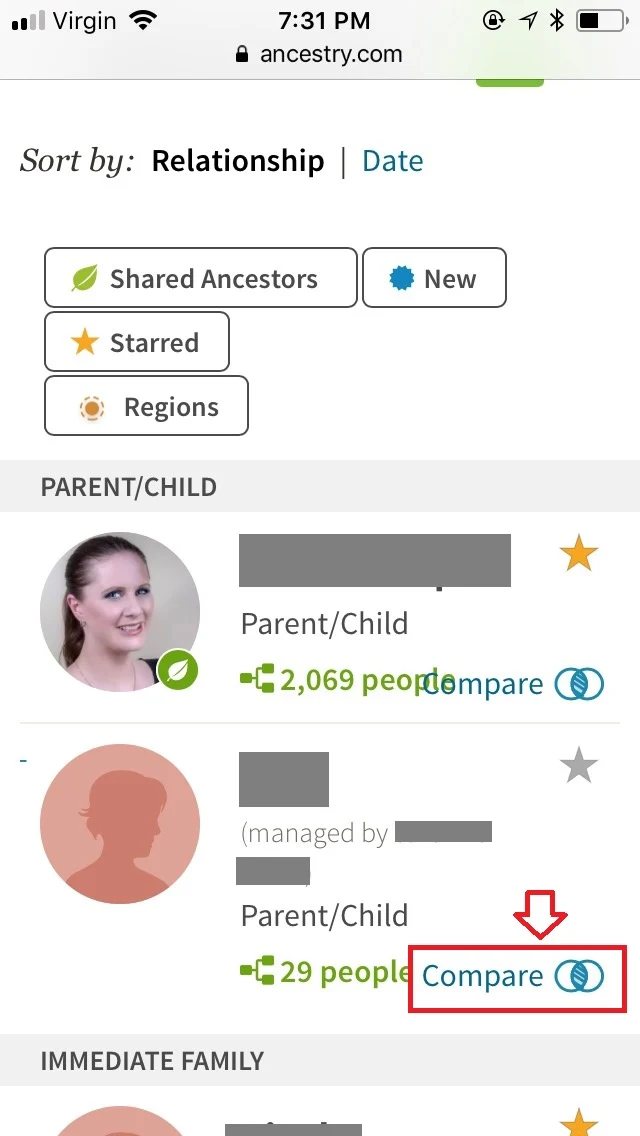
Once you click on "Compare", you will then be taken to a new page where you and your DNA match are compared side by side:
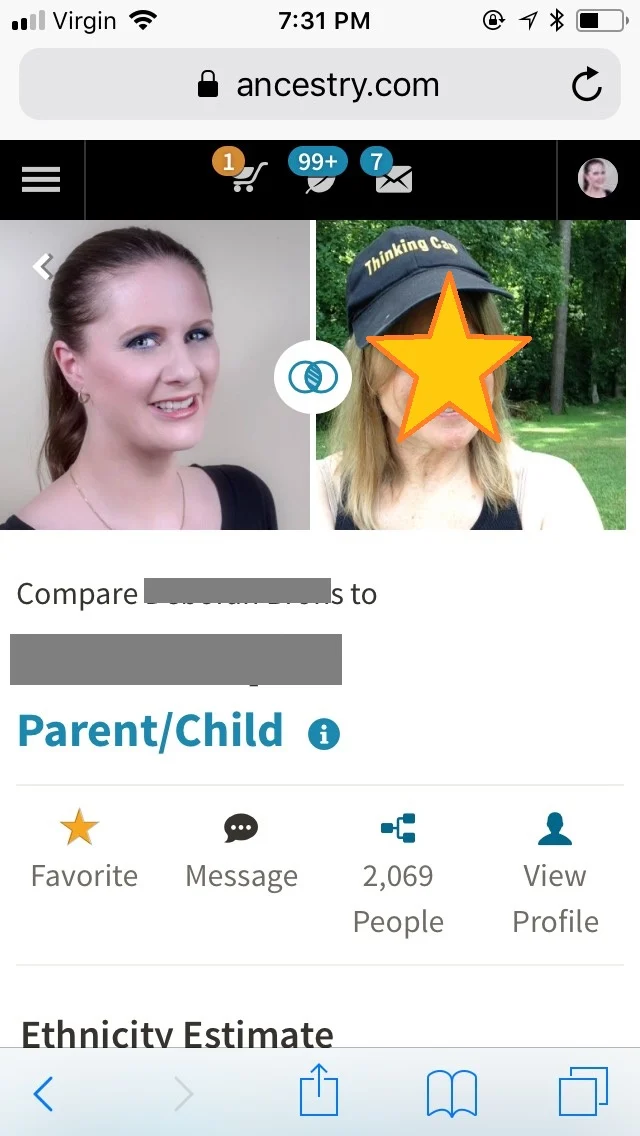
If you scroll down further, you will see your ethnicity estimate percentages side-by-side, which makes comparison very easy. In the image below, you can see my own ethnicity estimate compared with that of my daughter (her ethnicity regions are on the left, and mine are on the right):
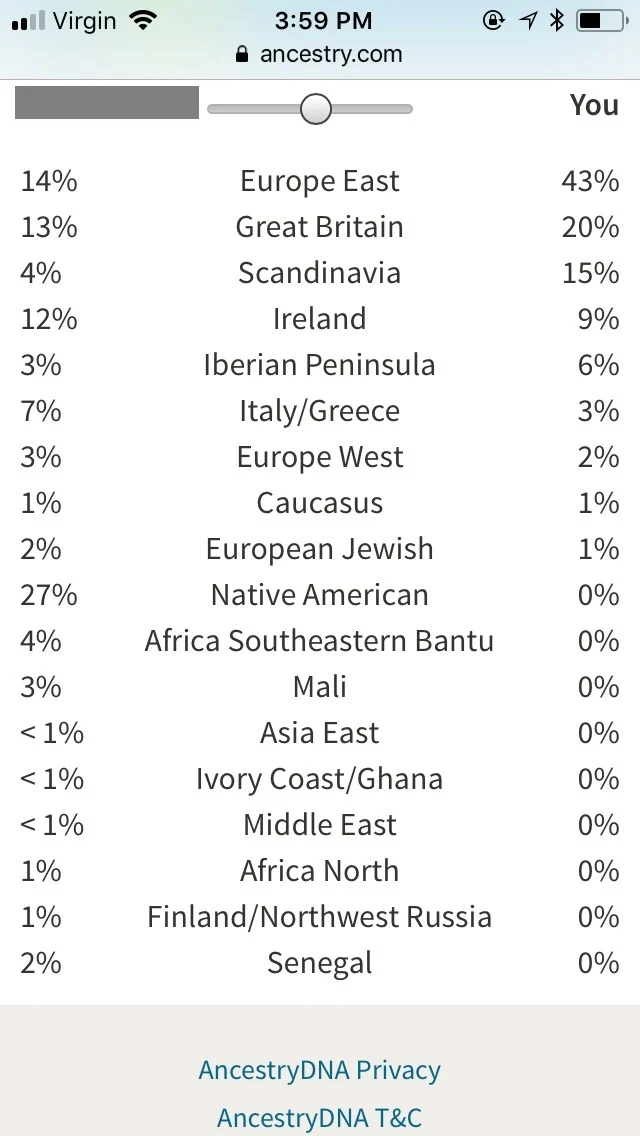
If you scroll down yet further, you can see whether or not you and your DNA match likely have ancestors with shared migration histories. The image below is from the comparison between myself and my mother. We share the Czech Republic, Slovakia, Poland, and Lithuania shared migration. My mother has Polish and Slovak ancestors, and it looks like I inherited enough of the right combination of DNA from her that the migration pattern shows up in my DNA, too:
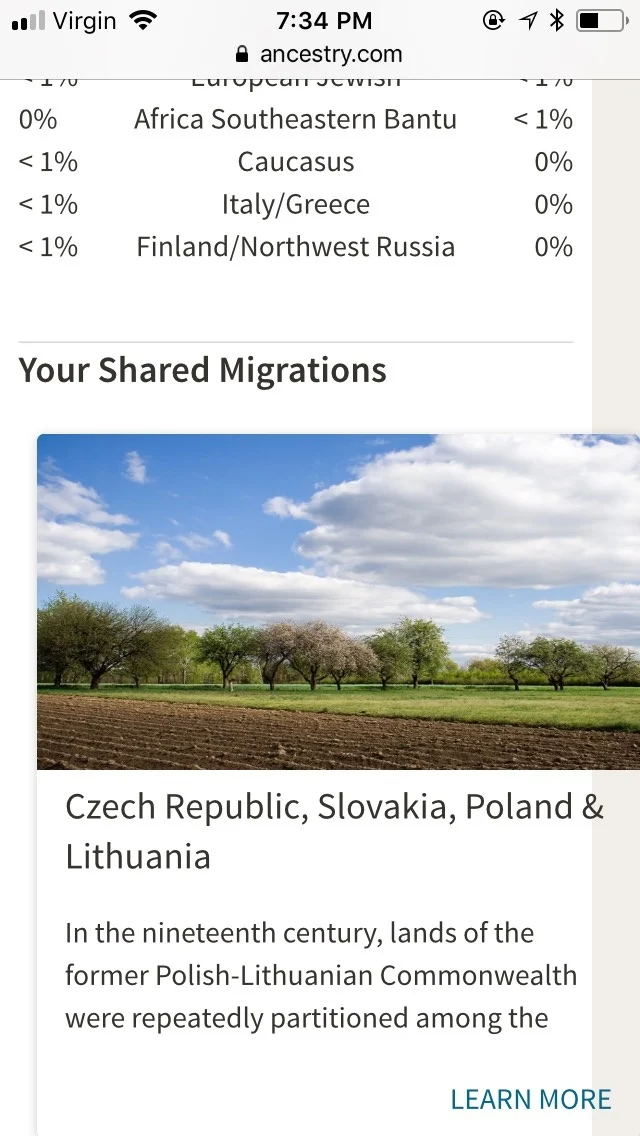
How can the Ancestry DNA ethnicity comparison tool help you with your research?
It's probably obvious that this is a cool feature, and that your family members might be interested in seeing screenshots of you compared with your siblings and/or parents. But is this tool useful beyond entertainment purposes?
My opinion is that yes, in some cases, you might be able to use this tool in order to determine on which side of the family a DNA match might match you. I'll use my mother's DNA as an example.
My mother has 54% Europe East DNA (this number has actually gone down over the past year - read why your ethnicity estimate might change). One grandfather was the child of Polish immigrants, and her other grandfather was the child of Slovak immigrants.
Since we know that a child shares about 25% of their DNA with each grandparent, we can assume that her 54% Europe East was inherited approximately half from each grandfather (25% Polish, and 25% Slovak).
As I scroll through my mother's DNA matches, I generally spend a significant amount of time trying to determine how they are related to my mother, and thus, to me. The most obvious way to do this is to take a peek at the family tree of the DNA match in question.
Sometimes, however, there is no tree. This is when ethnicity is helpful. Currently, I am most interested in my mother's Polish ancestry. I have a great deal of information about all of the other lines of her family, except for the line of my mother's Polish great-grandmother.
When I check out a DNA match, I can now immediate compare the exact percentage of Europe East DNA that they have. If they have a significant amount of Europe East DNA, and don't share any other ethnicities with my mother, I can often continue my research on the assumption that this is how they "match".
Of course, I have to call this a hypothesis, and carry out additional research in order to determine how they are truly related.
Note: This strategy is the most useful for closer DNA matches. For example, my mother had a close cousin DNA match pop up. She didn't have a family tree, but I was able to tell from looking at the ethnicity comparison that they were very obviously related on the Europe East lines. Since my mom inherited Europe East from both her Slovak and Polish grandfathers, I still had to figure out which grandfather the cousin matched, but this eliminated half of the lines of my mother's family. It makes things easier sometimes!
In the image below, you can see my mother's DNA compared with that of her first cousin's. Since we know that she and my mother share two grandparents, we would also know that each of them would have inherited about 25% of their DNA from each grandparent.
In the image below, you can see that the only ethnicity that they share in any significant amount is Europe East:
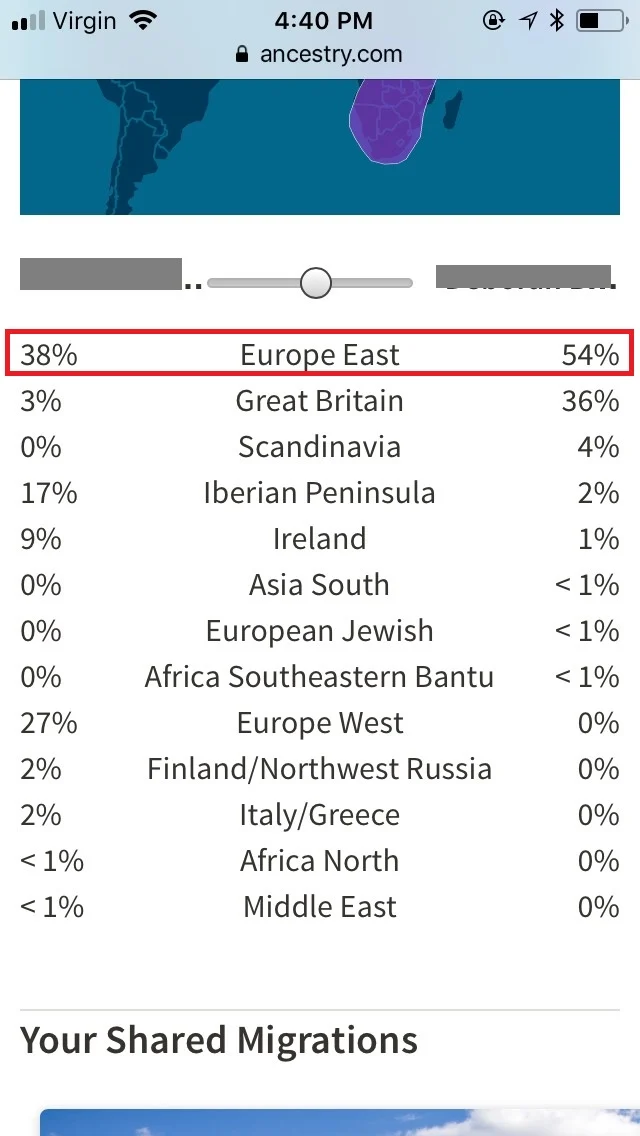
Don't forget that the absolute best way to know how you are related to your DNA match is by comparing your family tree. If you haven't started building your family tree yet, I would encourage you to consider starting one as soon as you can.
There are several other great Ancestry DNA features, like Common Ancestor Hints and AncestryDNA ThruLines, that are only available to members who have built their trees (and attached them to their DNA results).
You don't need an Ancestry membership to build your family tree, or to have access to it, but it is easier to build it quickly and get access to pretty amazing records if you do have a subscription. To get a two-week free trial, please consider using the following link (I will get a very small commission at no extra cost to you if you end up subscribing, and it goes a long way in helping me support this website) Ancestry Free Trial .
Conclusion
I hope that this post helped you learn a little bit about this exciting Ancestry DNA tool, and how it might be able to help you learn how you are related to your DNA matches. If you have anything that you would like to add, a question, or would just like to share what you learned using this tool, I would love to hear from you in the comments.
Thanks for stopping by!

